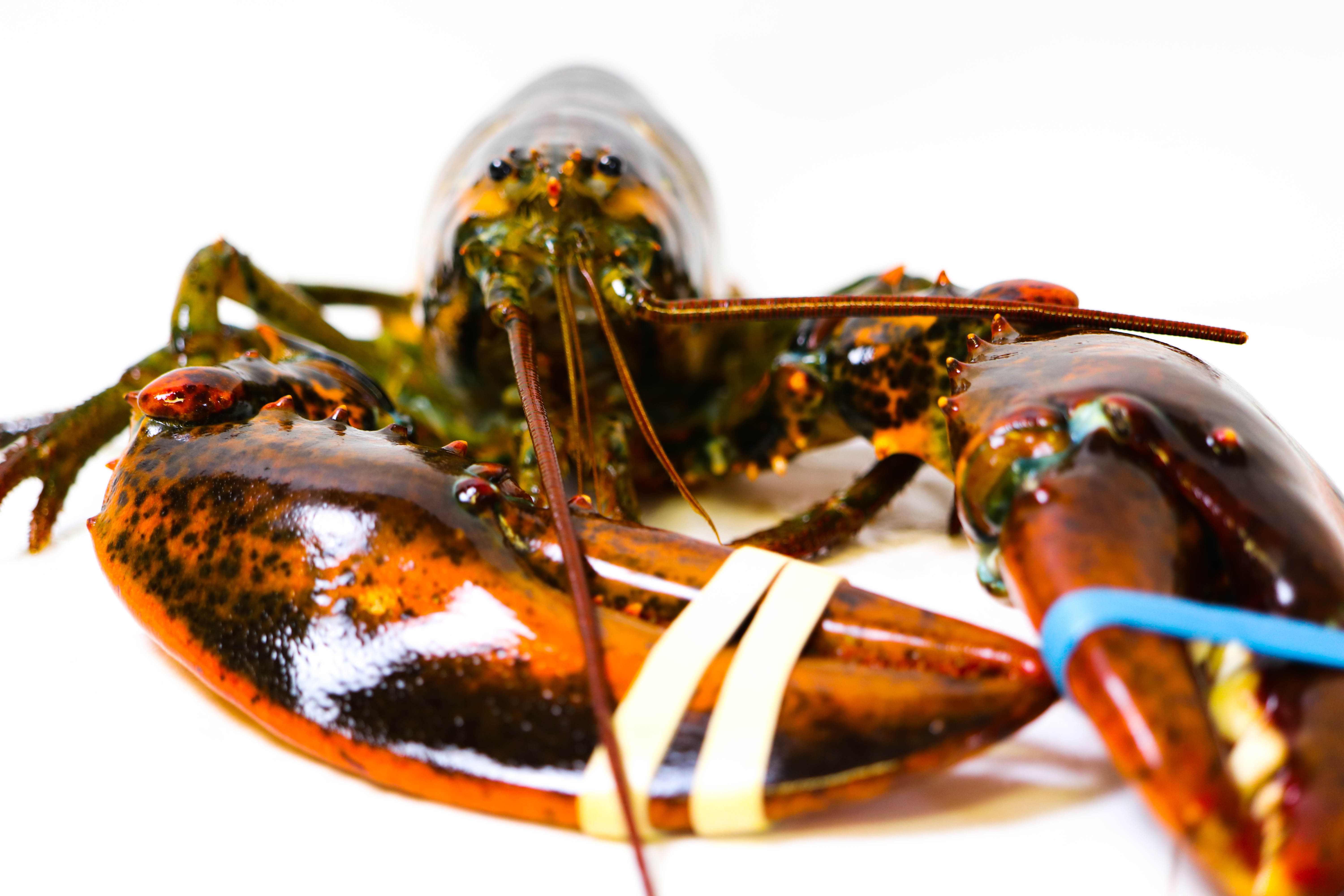
A lobster is a lobster… correct? Well what if we told you depending on season, there are different kinds!
Although a lobster will always be a lobster, you will find that, depending upon the season, you can buy lobsters as hard shells or soft shells. This is because lobsters never stop growing over the course of their lives. And with growth comes the need for a bigger shell! Adult lobsters molt once a year (on average), crawling out of their old, too-small shell. They pull in a lot of water to expand their new, paper-thin shell, which then hardens over the next couple of months. This transformation brings a sweeter taste, more tenderness, and a different color to the meat, in addition to the appearance of there being “less meat” in a soft shell lobster. This week, as we’re getting into soft shell season, we’re talking about the differences between the two kinds of lobster.
Currently, it is hard shell lobster season. Hard shell lobster season typically runs from November/December through June/July, while soft shell season runs July/August through October/November. The seasons are always an approximation because the lobster’s shedding behavior is determined by water temperature.
Because hard shell lobsters have filled out their available shell space, they contain a significant amount more meat per pound in comparison to soft shells. So when you crack open a soft-shell lobster, you may be surprised by a smaller amount of meat inside. Hard shell lobsters also have less water weight, while soft shell lobsters contain more water. This difference in yield is reflected in the lower pricing of soft shell lobsters. For comparison, the average yield for hard shells is roughly 20% to 28% meat, while soft shells contain around 15% to 20% meat.
In addition, supply and demand fluctuates for each type of lobster throughout each season. Although the overall hard shell catch is lower during peak season, the demand for hard shell lobsters is actually higher than soft shell lobsters in peak season. This is due to hard shells being far better to ship and travel with. Soft shell lobsters do not tend to live as long out of water, making them harder to travel with, and virtually impossible to ship.
The color of a hard-shell lobster’s meat is also different than that a soft-shell lobster. You will notice that a soft-shell lobster has a brighter red color, due to the carotenoid pigments becoming more concentrated right before, or right after, a lobster molts. A hard-shell lobster’s meat is also red, but it’s a bit duller in color.
When deciding between hard shell and soft shell lobsters for dinner, it’s important to consider that consuming a full lobster takes time and effort. Some people enjoy cracking them open, while others will pay the added fee for a lazy man’s lobster dinner, with the shell already cracked. Obviously, hard shell lobsters are more difficult to open, but something people don’t often think about is the lack of water inside hard shell lobsters. This makes far less mess! Soft shell lobsters have a new, thinner shell that cracks easily, but the water inside makes it messier!
In terms of flavor and texture, it all comes down to personal preference. Some prefer hard shells for their meaty taste and firm, dense texture. While others prefer the sweeter, tender taste of soft shells. Regardless, a lobster is a lobster at the end of the day, and who can say no to these sweet treats!
Tell us in the comments, which do you prefer, soft-shell lobsters, or hard-shell lobsters?

Soft shell being much easier to crack open; however, lobster is lobster and I will take whatever I can get! Yum!
I love them all! My brother-in-law used to tell us when we came for a visit from Pennsylvania that”Tonight we’re having Surf and Surf! Two lobsters for everyone!”
Love “surf n surf”. I have a restaurant in Montréal Canada and might just make that a dish!!!
I was told by a vendor in Nova Scotia that soft shell lobster are imperfect because sometimes they are missing a claw or other defects. I found that strange because we have had several times the soft shell lobster from Maine and they had all their parts and were deliciously tender and sweet. Give me your feed back. Thanks.
Soft shell lobsters are the same as hard shells except they are in the process of growing into a new shell. Of course, any lobster may lose a claw but they will grow it back! Soft shells do tend to be more tender and sweet!